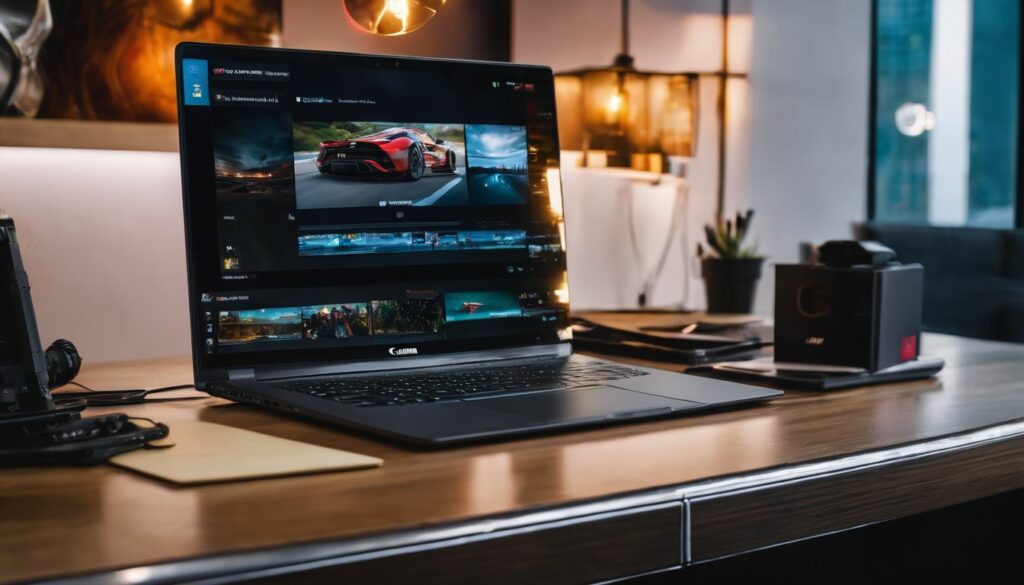In today’s fast-paced digital world, having a website that looks good on a desktop just doesn’t cut it anymore. People are browsing the internet on their phones and tablets more than ever before, which means your site needs to shine on every device.
Ever been frustrated by a site where the text is too tiny to read or you’re constantly pinching and zooming? That’s old school – we’re here to talk new cool.
Did you know responsive web design isn’t just about looking pretty? It’s critical for keeping visitors happy and engaged, no matter how big or small their screens are. Be My Social has cracked the code on making sites that not only adjust to different devices but also make users smile with sheer ease of use.
This article will guide you through creating a site that works like magic across all gadgets, turning swipes into smiles and taps into transactions.
Dive in with us as we unravel the secrets of seamless mobile experiences!
The Core Principles of Responsive Design

By understanding these principles, businesses can ensure that their websites are user-friendly and optimised for all screen sizes.
Fluid Grid Systems
Fluid grid systems are at the heart of responsive design. They let your website stretch or shrink to fit any screen. Imagine a grid like a game of tic-tac-toe that can grow bigger or smaller, making sure everything looks good on phones, tablets, and computers.
This design magic means no matter where customers see your site, it always looks just right.
Using fluid grids is smart for business owners because it helps keep your website looking professional everywhere. With these flexible layouts, you won’t lose customers just because they switch devices.
Your website will quickly adapt, keeping images and text in perfect order so shoppers can find what they need fast. It’s all about creating seamless user experiences that work great on every device without extra effort from you.
Flexible Images and Media Queries
After setting up fluid grids, it’s crucial to make sure your images and media don’t just stick at one size. They need to stretch or shrink to fit the screen they’re on. If you have a picture of a product on your website, you want it to look good whether someone is looking on their phone or their computer.
Media queries are like detectives for your site. They figure out what kind of device someone is using and then change the site’s style so it looks its best on that device. For example, if the screen is small, the text might get bigger so it’s easy to read without zooming in.
This keeps everything looking nice and working well no matter where your customers see them—on phones, tablets or desktops—which offers them a seamless user experience across all devices.
The Power of Flexbox in Responsive Layouts

Flexbox revolutionises the way we create responsive layouts, offering a more efficient and flexible approach to web design. With its advanced features and capabilities, Flexbox allows for easier positioning, alignment and distribution of elements within a website’s layout.
Advantages of Using Flexbox
Flexbox makes building a responsive layout easier. It lets you create complex designs that work on any screen size. Your website will adjust smoothly, looking great on phones, tablets, and computers.
This means users enjoy a seamless experience no matter how they access your site.
With Flexbox, you have better control over alignment and spacing. You can put content in neat columns and rows without much trouble. Elements stay where they should as screens shrink or grow.
This keeps everything user-friendly and ensures your site looks professional.
Moving forward to media queries, these are like magic for responsive design..
Embracing Media Queries for Optimal Viewing Experiences
Crafting designs for various screen sizes is essential to ensure an optimal viewing experience, and media queries play a crucial role in this process. To learn more about how media queries can enhance your website’s responsiveness, keep reading!
Crafting Designs for Various Screen Sizes
Designs for different screen sizes need to be flexible. They should change shape and size like water in a cup, filling up all the space perfectly on any device. To do this, designers use grids that can stretch or shrink.
This way, whether someone looks at a website on a big computer monitor or a small phone screen, it looks good and is easy to use.
Making sure images work well on all devices is also key. Designers make images that can grow bigger or smaller without losing quality. They test how websites look on many screens to find the best balance.
This ensures everyone gets an optimised user experience, no matter what device they’re using.
The Impact of Mobile-First Design on User Experience
Prioritising mobile interface design can significantly enhance user experience across different devices. By focusing on mobile-first design, businesses can ensure a seamless and engaging experience for all their website visitors.
Prioritising Mobile Interface
Making your website work well on mobile is a big deal. Most people use their phones to go online, so if your site isn’t easy to use on a small screen, you could lose customers. Your website needs to look good and work fast on mobile devices.
This means big buttons for fingers to tap and menus that are simple to use with one hand.
You should design your website for mobiles first. This helps make sure it’s the best it can be for phone users. Think about how someone will feel when they visit your site on their phone.
They want it fast, easy, and without any problems.
Navigating the Business Benefits of Responsive Design
Responsive design is smart for business. It makes sure a website works well on phones, tablets and desktops. This means more people can use the site with no trouble. Happy customers are likely to stay longer and buy more.
Plus, search engines prefer sites that work on mobiles. This helps your business show up higher in search results.
With responsive web design, you save time and money too. You don’t need separate sites for different devices. One site fits all screens, which makes managing your online presence simpler.
Up next: How to put responsive design into action with practical tips!
Implementing Responsive Design: Practical Tips
Streamlining navigation for touch screens and optimising load times for mobile users are crucial aspects of implementing responsive design. These practical tips ensure a seamless and user-friendly experience across all devices.
Streamlining Navigation for Touch Screens
Touch screens need menus and buttons that are easy for fingers to tap. This means making them big enough and spaced out so people don’t press the wrong thing by mistake. You should also think about how someone uses their phone.
They often use it with one hand, so place important navigation elements within easy reach of their thumb.
For a mobile-friendly design, keep the layout simple. Have a clear path for users to follow, which makes finding things easier and keeps them happy. Use drop-down menus or ‘hamburger’ icons to save space but still give all the options they need.
Remember, a good user experience on mobile can make people want to stay longer and come back more often.
Next up is how you can make your website load fast for those on their phones.
Optimising Load Times for Mobile Users
Ensuring fast load times for your website on mobile devices is crucial for keeping users engaged. Mobile users expect quick access to information, so optimising your website’s load times can significantly impact user experience and conversion rates.
To achieve this, consider compressing images, minifying code, and leveraging browser caching to reduce loading times. Additionally, implementing responsive image techniques like using the srcset attribute can help deliver the right size of images based on the user’s device, improving load speeds further.
Crafting a seamless mobile experience transcends just an appealing design; it also involves providing swift access to content for users on-the-go. Optimising load times not only enhances user satisfaction but also positively impacts search engine rankings as speed is a crucial factor in determining website performance.
Conclusion: The Future of Web Design is Responsive
In conclusion, we’ve explored the essential principles of responsive web design. These practical strategies are easy to implement and efficiently improve user experiences across devices.
Emphasising the importance of mobile-friendly design can lead to significant improvements in website performance. By embracing these approaches, businesses can ensure consistent and engaging user experiences for all visitors.
For further guidance, consider exploring UI/UX guidelines and trends to enhance your mobile responsive designs. Let’s craft websites that redefine responsiveness while creating a symphony of E-commerce for the digital world!
Discover how responsive design can give your business a competitive edge in our detailed article, “Navigating the Business Benefits of Responsive Design.”


